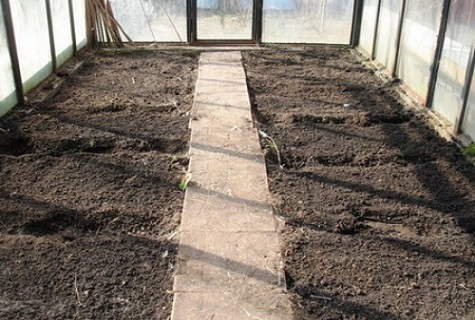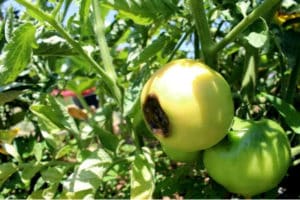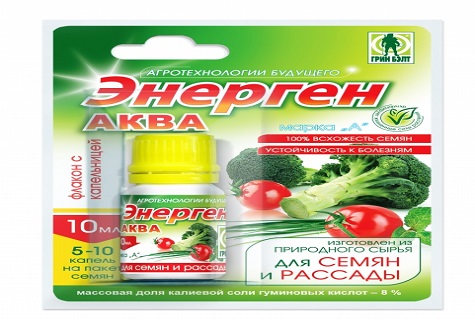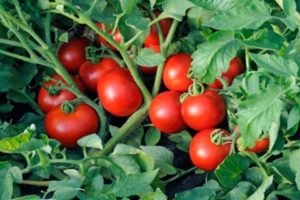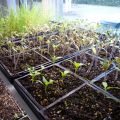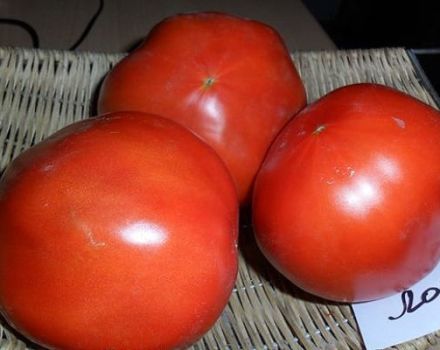How to prepare the soil in a greenhouse for tomatoes in spring
The annual preparation of the soil in the greenhouse for tomatoes in the spring takes time and energy. Its necessity cannot be underestimated. Spring soil preparation work is especially important in older greenhouses. It is difficult to establish crop rotation in a small greenhouse. Spores of fungi accumulate in the soil - microorganisms that are dangerous to tomatoes. The land in the greenhouse is depleted due to the intensive exploitation of the greenhouse space from early spring to October. Information on how to prepare the soil correctly can be helpful for a beginner grower.
Overview of processing methods
The soil for tomatoes in a greenhouse, which has been in operation for several years, probably contains fungi and bacteria that are harmful to nightshade crops. Before planting tomatoes, you need to treat the soil in one of the following ways:
- chemical;
- biological;
- thermal.
We will consider each method in detail, this will help you choose the most suitable one, prepare the soil in the greenhouse in a timely manner, without wasting money and time.
Treatment chemicals
In the spring, soil cultivation using chemicals is carried out in extreme cases. The use of chemicals in a tomato greenhouse is justified in the fall. Useful microorganisms, destroyed by chemistry, naturally have time to recover in the soil before planting a tomato. When using chemistry in the spring, soil fertility is restored with the help of biological preparations.
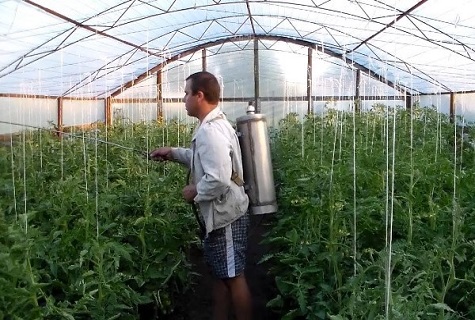
Table of chemicals that can be used in the spring before planting tomatoes in the greenhouse.
| A drug | Mode of application | Application time | Dosage | Frequency |
| formalin | watering the soil | at least 14 days before planting the tomato | for 1 m² of greenhouse 10 liters of solution of 40% concentration | |
| copper sulfate | surface watering of soil | before landing a day or two in the holes | apply a 2% solution | no more than 1 time in 5 years |
| sulfur checkers | hermetically sealed greenhouse is treated with the gas of a burning checker | in early spring, after thawing of the topsoil | according to the attached instructions | |
| TMTD fungicide | scatter powder over the dug-up surface of the beds, fence | annual works in spring | 80 g / m² | no more than once a season, soil for tomatoes in a greenhouse |
| iprodion 2% | in the form of a dry powder, apply to the soil in the greenhouse before planting | before planting tomatoes | in holes of 60 g, 100 g / m² for digging | no more than once a season |
How to restore soil fertility after applying chemistry
When the soil in the greenhouse is treated with chemistry, we are forced to kill not only pathogenic microorganisms, but beneficial bacteria are destroyed. The microflora needs to be restored.Begin restoration work 7 days after applying any chemistry. For many years, Baikal Em-1 has been used for these purposes - a certified agent for the rapid restoration of soil microflora.
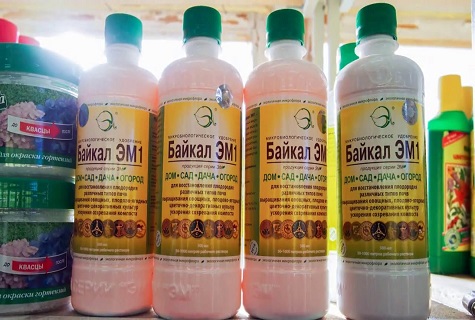
Baikal contains useful microorganisms:
- fermenting mushrooms;
- nitrogen-fixing bacteria;
- photosynthetic bacteria.
Prepare working fluid 5 days before processing. Defend 4 liters of tap water, add 40 ml of the drug, 4 tbsp. l honey, mix, cover with a loose lid. Insist 5 days. Use the prepared solution for watering the soil.
Important! Use Baikal EM-1 at a soil temperature of 10 ° C and higher, if the soil in the greenhouse is dry, water it abundantly and only then process it with a ready-made solution of Baikal.

After chemical treatment, compost or humus must be added to the soil for tomatoes to restore humus, low-lying peat to improve the structure of the soil and normalize its acidity.
Solutions of potassium salts of humic acids increase soil fertility:
- Energen-Aqua;
- Gumivit;
- Guvitan-S.
Heat treatment of soil in spring
Heat treatment of the soil is a laborious procedure. Remove the topsoil (5-10 cm) in autumn. In winter, it freezes, and in spring it needs to be spread out in a layer of 10 cm on any flat surface covered with black film. Steam can be used for heat treatment, but steep boiling water is usually used in garden areas.
The earth is watered with water from a watering can, covered with foil. To preserve heat, straw or reed mats are thrown over the film. Any thermal insulation material is suitable for this purpose.
The covered land should lie down for at least 3 days. After that, it can be brought into the greenhouse. Any heat treatment of the earth has a detrimental effect on beneficial microorganisms. Water the prepared ridges with any biological product that restores fertility. Tomatoes can be planted after 2 weeks.

Biological method of soil restoration
The biological method of soil restoration involves the use of biological products of soil fertility. The mechanism of action of these biological products is based on the ability of microorganisms, processing organic matter, to form compounds available to plants.
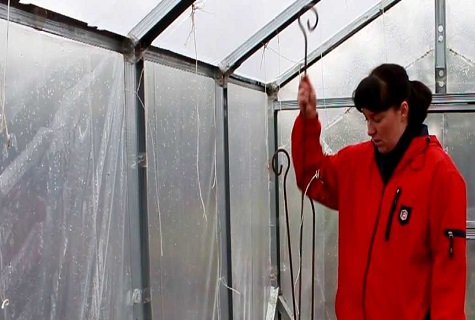
Preparing a greenhouse for planting tomato seedlings using biological products is very effective. The likelihood of disease with late blight, apical rot, TMV, and other fungal diseases decreases... In soil treated with a biological product, beneficial microorganisms suppress the activity of pathogens, this contributes to better growth of tomatoes and a decrease in morbidity. When a summer resident has a question about how to treat a greenhouse in early spring, so as not to treat a tomato during the summer, you can advise proven drugs:
- Baikal;
- Baktofit;
- Trichodermin.
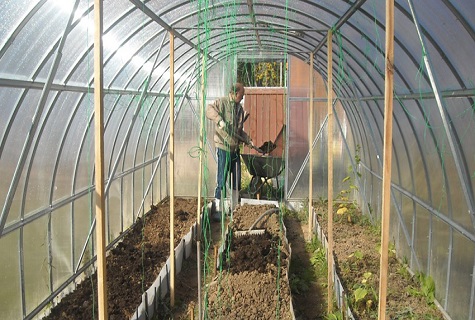
To restore the soil, biological products must be used for several years (3-4 years). The greenhouse in the spring, in parallel with the use of drugs, should be filled with a new portion of organic matter. This is well-rotted manure, chicken droppings, compost. The richer the soil is in organic residues, the more microorganisms will produce useful substances.
Composting
For planting a tomato, it is best to use self-made compost. It can be prepared during the summer using any modern biological product. For example, you can take the biological product Ekomik Urozhainy. It accelerates the maturation of the compost. During the summer and autumn, waste accumulates at the summer cottage:
- tops;
- leaves;

- cut shoots;
- cut grass.
They do not need to be destroyed, they are excellent raw materials for making quick compost. Biological waste should be placed in loose heaps. Water the heaps with a solution of a biological product each time a new layer 20-30 cm thick forms.
To prepare 10 liters of solution, you will need 100 ml of the drug.The maturation of such compost takes from 1.5 to 3 months. Such compost can be added to the holes in the spring, it is an excellent organic fertilizer for growing tomatoes in greenhouses. It is enough to add 5 to 10 kg of homemade compost per square meter.
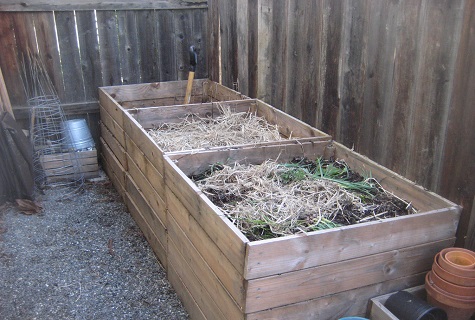
After the ridges are filled with compost, they are spilled with a liquid solution of a biological product a week before sowing. Water (10 l) is heated to a temperature of 25 ° C, 100 ml of "Ecomik Urozhainy" is added to it. For greenhouse use, the consumption rate is 1 l / m². For disinfection, all load-bearing structures of the greenhouse are treated with this solution.
"Fitosporin M" for soil disinfection
In the spring, the treatment of the soil with the fungicide "Fitosporin M" is simply necessary if the previous summer there was an outbreak of any fungal disease in the greenhouse. You can buy the product in the form of powder or paste. A liquid form is also available, but it is more suitable for home floriculture. Easy to use paste. A solution prepared from it can retain its properties for a long time. The undoubted advantage of the fungicide is the wide range of temperatures at which it can be applied (from -40 ° C to + 50 ° C).
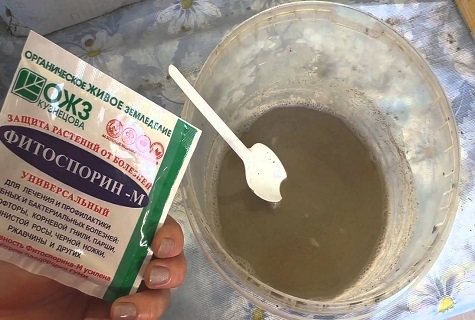
The soil in the greenhouse is treated with Fitosporin for the first time in early spring, the treatment is repeated after 2 weeks. The best time for work is evening. This is explained by the fact that under the influence of sunlight, the activity of the substance decreases.
Methods for preparing a working solution from powder and paste are different. When purchasing powder, you need to remember that the solution must be prepared on the day of the work, 2 hours before they start. 10 liters of water will require 5 g of powder.
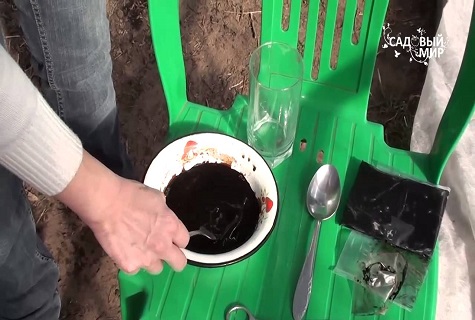
A concentrated solution is prepared from the paste in a 1: 2 ratio. 100 g of paste requires 200 ml of water. The concentrated solution can be stored for a long time, before use it is diluted and used for its intended purpose. The soil in the greenhouse, with an aqueous solution of Fitosporin, is shed a week before transplanting tomato seedlings into the ground. Fitosporin can be used for preventive treatment of planting material - tomato seedlings.
Preparing the beds for tomatoes
In spring, in greenhouses, due to the difference between day and night temperatures, the earth can cool, which negatively affects tomato seedlings. The roots of tomatoes do not tolerate hypothermia well. The construction of warm ridges speeds up the transplantation of tomato seedlings into greenhouses. It is better to use fresh manure for heating.
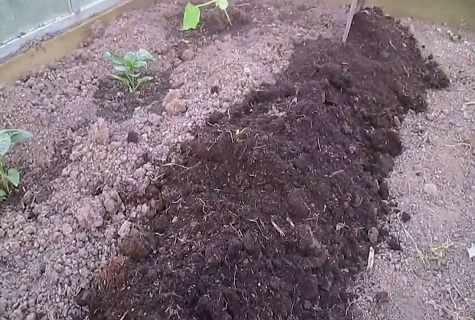
It's easy to build a ridge. It is necessary to dig a not wide trench (30 cm) for the entire length of the ridge, deep on the bayonet of a shovel or a little deeper. Put manure in the trench, tamp it and spill it with boiling water. Pour a layer of earth on top. Planting holes can be formed on both sides of the trench. Overheating the manure will generate heat, gently heating the soil.
When digging tomato ridges, humus, peat, sand must be added for each square meter of the ridge. The proportions depend on the type of soil. Add rotted sawdust (10 kg / m²) moistened with an aqueous solution of urea to clay soil. A bucket of water requires 150 g of urea. One bucket of solution is enough for 3 buckets of sawdust.

In addition to organic matter (compost, humus), during digging, add mineral fertilizers to the soil:
- 200 g of potash;
- 250 g phosphoric;
- 350 g nitrogen.
Consumption is given for 10 m².
You do not have to worry about the fate of tomatoes if the soil in the greenhouse is prepared according to all the rules.
